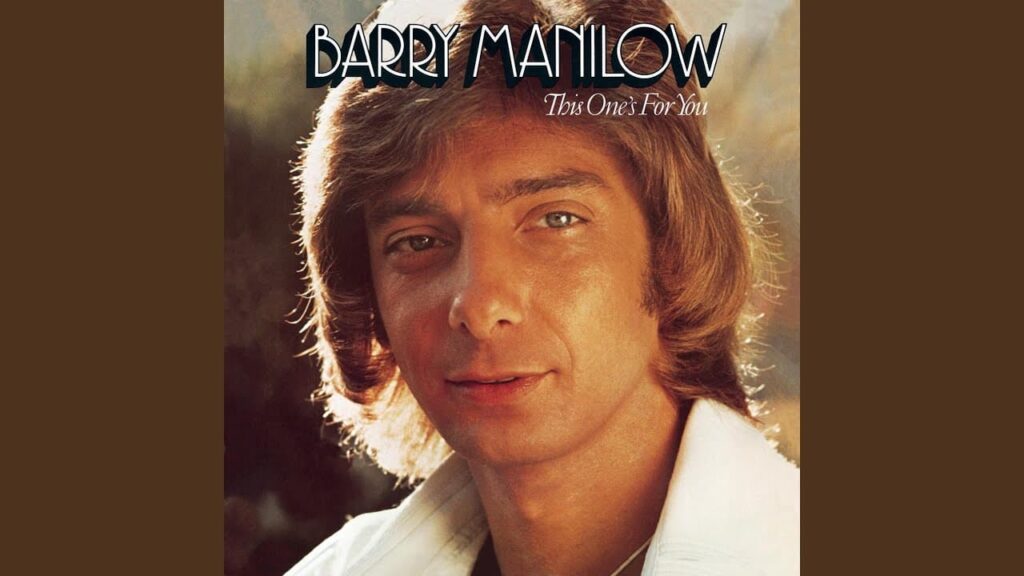
A Grandiose Ballad of Second Chances: When a Voice Soared with the Hope of Rekindled Love.
“Looks Like We Made It,” a sweeping, orchestral ballad that captured the triumphant yet fragile hope of rekindled romance, became a defining moment for an artist known for his ability to weave grand emotional narratives into his music. This 1977 single by Barry Manilow reached number one on the Billboard Hot 100, a testament to its immediate appeal and the emotional resonance of its story. It’s a song that grapples with the delicate dance of reconciliation, the tentative steps towards rebuilding a broken bond, and the overwhelming relief of finding love again after a period of separation. It’s a song that transforms a personal moment of reunion into a soaring anthem of second chances.
Imagine a grand ballroom, the soft glow of chandeliers illuminating a couple reunited after a period of painful separation. Barry Manilow, his voice a blend of tender vulnerability and soaring power, delivers a performance that’s both intimate and theatrical. He sings of a love that has weathered the storm, a relationship that has survived against the odds, and the overwhelming sense of relief that accompanies a successful reconciliation. The song, featured on his album “Even Now,” wasn’t just a pop hit; it was a carefully crafted emotional drama, a testament to the artist’s ability to weave complex narratives into his music. The sweeping orchestration, the dramatic vocal delivery, and the relatable lyrics created a sense of timelessness, a feeling that this story of reunion had been played out countless times, and would continue to resonate for generations.
The song’s genesis, within the context of Manilow’s career, marked a period of artistic triumph and emotional depth. He was known for his ability to craft memorable melodies and deliver powerful vocal performances, but with “Looks Like We Made It,” he ventured into more nuanced territory, exploring the fragile hope and overwhelming relief of a rekindled romance. He wasn’t afraid to embrace the theatricality of the moment, to amplify the emotions and create a grand, sweeping narrative that resonated with audiences on a deeply personal level.
For those of us who remember the late 1970s, “Looks Like We Made It” evokes a sense of romantic optimism, a yearning for a time when ballads were not afraid to embrace the grand gestures of love and reconciliation. It was a time when music served as a refuge, a way to express the unspoken feelings that lingered in the shadows of our hearts. Manilow’s performance, with its soaring vocals and dramatic orchestration, offered a moment of pure emotional release, a sense of shared triumph. It was a song that spoke to the deepest longings of the human heart, the desire for connection, for forgiveness, and for a love that could withstand the test of time.
The song’s enduring appeal lies in its timeless message of second chances and the enduring power of love to overcome adversity. It’s a reminder that even when relationships falter, there’s always the possibility of reconciliation, the chance to rebuild and rediscover the love that once bound two souls together. It’s a song that transcends generations, speaking to the universal human experience of love and loss, and the enduring hope for a second chance. And even today, decades later, “Looks Like We Made It” retains its power to move and inspire, its soaring melody and heartfelt lyrics offering a moment of quiet reflection, a moment of shared vulnerability. It’s a testament to the power of a grand ballad to capture the complexities of the human heart, a reminder that sometimes, the most profound emotions are expressed through a carefully crafted melody and a voice that speaks directly to the soul. It’s a song that serves as a poignant reminder that love, even when broken, can be rebuilt, a testament to the enduring power of second chances.